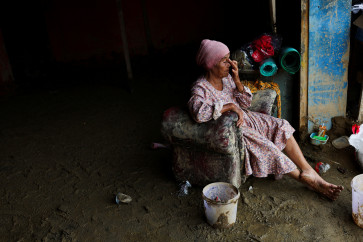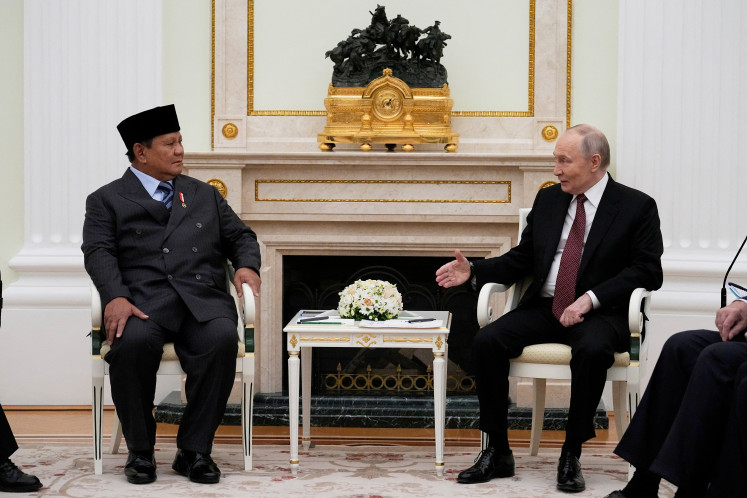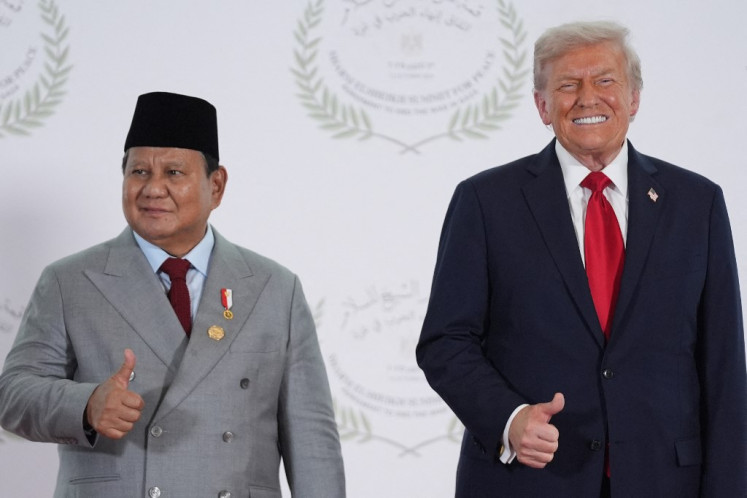Popular Reads
Top Results
Can't find what you're looking for?
View all search resultsPopular Reads
Top Results
Can't find what you're looking for?
View all search resultsHelena Spanjaard: Highlighting hidden masterpieces
HELENA SPANJAARD: (JP/J
Change text size
Gift Premium Articles
to Anyone
HELENA SPANJAARD: (JP/J.B. Djwan)
The Bogor Presidential Palace in West Java could be a magnificent National Museum of Modern Art with "the Sukarno collection as its crowning jewel".
At least that is the opinion of leading Indonesian art historian and author of Indonesian Odyssey (Equinox Publishing, Asia), Helena Spanjaard, who spoke with The Jakarta Post prior to the recent launch of her book at the Ubud Writers and Readers Festival in Bali.
Indonesian Odyssey opens doors into 21 of Indonesia's finest private collections of modern and contemporary Indonesian paintings.
And while it is a blessing that the nation's private collectors are ensuring some of the most important paintings of the past century remain on Indonesian soil -- and have generously allowed them to be housed in the book -- these are works that should be seen by the public.
Included in the collections are exuberant works by Hendra Gunawan, watchful and mysterious works of Ivan Sagita, explosive Affandis and the finely drawn realism of Lee Man Fong.
Journeying through the pages of Spanjaard's book, the viewer is inclined to weep at the power and beauty of works illustrated, and also weep because these masterpieces of Indonesian art -- works that poignantly, joyously, tragically and often humorously portray Indonesia's 100-year march from crushing colonialism, war and revolution toward a modern democratic state -- are, for the most part, confined to the walls of private collections.
The invisibility of these masterpieces also keeps the importance and talents of Indonesian modern and contemporary artists away from the world stage, and cancels out a certainty that modern Indonesian art would otherwise take up its rightful position alongside the world's most renowned painters of the 20th century.
The invisibility of Indonesian modern art in a world context was seen in Spanjaard's shock in 1978, when she discovered the Bandung Art School and its contemporary painting movement that was spawned during the chaotic and politically charged 1960s.
Spanjaard in the 1970s was an art history student of Holland's Rietveld Art Academy along with Indonesian artist Farida Srihadi. This friendship led her backpacking to Indonesia in 1978 in a seismic shift that altered her life forever.
"That was my first journey to Indonesia, coming from Sri Lanka and India to Jakarta. I was very surprised to see Jakarta was so modern. I didn't expect that. That's what happens when you study archeology. You expect only temples and villages. Then I went on to Bandung and that was the turning point in my life.
"Farida's husband, Srihadi Soedarsono, one of the country's greatest painters, something I did not know at the time, took me to the art academy in Bandung. I really did not know about this academy and I thought 'that's funny, they are making modern art'.
"Even today it is hard to find information about modern Indonesian art or about art academies here," said Spanjaard on the lack of international recognition for Indonesian modern art that continues today, and an ongoing "colonial attitude" that only traditional arts of Indonesia are valid.
After discovering first Bandung and then Yogyakarta's modern artists, Spanjaard "wanted to tell the world about Indonesia's modern art and that they can make modern art if they want".
However, in her native Holland, it was like banging her head against a brick wall with little interest from academics on the subject.
Ironically, Spanjaard's first introduction to Indonesian arts was to the highly traditional variety when, as a seven-year old, she visited an Indonesian exhibition and performance by Indra Kamadjojo at the Royal Tropical Museum in Amsterdam.
"I was frightened. The room was very dark with dark wooden Indonesian figures that were very frightening, but also excitingly mysterious. I think that was probably my first experience of Indonesia," said Spanjaard of an introduction to Indonesia and its arts that would, in her adulthood, become an all-consuming passion.
That passion is alive in Indonesian Odyssey, Spanjaard's text informing the reader simply and clearly on the background of paintings created by some of the country's greatest painters.
Her text aligned with images of works allows the reader to understand the symbols and meanings within these masterpieces that are not normally on public display.
It is for this reason that Spanjaard believes it is time for Indonesia to create a public space where the country's art history can be read by all.
"I absolutely believe many of these works should be in a national museum, starting with the Sukarno collection," Spanjaard said.
The Sukarno collection, housed in the Bogor and Jakarta Palaces and off-limits to the public, was the foundation stone of art collecting in the country, explains Spanjaard, with many early private collectors informing their taste after that of Sukarno.
It is the fact that these works document Indonesia's art history that makes Spanjaard so determined that a national museum of modern art is so needed.
Spanjaard points out that most art museums around the world are built on gifted or loaned art works from private collections and an Indonesian museum of modern art could give an opportunity to "future generations to be educated, to see their own national heritage in the field of painting and history of Indonesia's development through the different periods in the country's journey.
"People don't usually get that in one building. A National Museum of Modern Art would give them that."
For now, at least, we can meet the minds of the country's painting masters through Indonesian Odyssey and the collectors who are the present keepers of Indonesia's modern art history.










